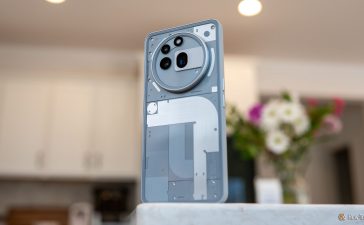
General Motors recently made a decision that, depending on how you look at it, may come back to bite them in the ass.
The company announced that for its future lineup of electric vehicles, it would no longer offer access to Apple CarPlay and Android Auto. That means future owners of the Chevy Blazer EV or GMC Sierra EV Denali won’t be able to project their phone’s operating systems onto the infotainment screen of their vehicles.
The backlash was swift. Car shoppers told the Detroit Free Press that the move was “a dealbreaker” and a “huge blunder.” Auto analysts were left scratching their heads, noting that demand for CarPlay and Android Auto was “massive” and that GM was taking a huge risk by cutting off access.
But Scott Miller, vice president of software defined vehicle and operating systems at General Motors, doesn’t think the decision was a terrible one — even when I asked him exactly that.
“Wow, there’s no lead-in on that one, huh,” Miller said. “I did read your articles, by the way. And I don’t think we need to rehash those.”
Fair enough. I wasn’t surprised that Miller wouldn’t see it as a terrible decision when he likely was heavily involved in the process. What I was interested in was why they made it and how they were handling the fallout. After all, the car market today is dominated by huge consumer demand for Apple CarPlay and Android Auto. Apple has said nearly 80 percent of new car buyers insist on the feature before making a purchase, and independent surveys confirm that demand is robust.
But Miller thinks that demand is a just sign that customers are still seeking an even better experience when getting in their cars. He doesn’t see it as an end point but rather a glimpse into what’s possible and what’s to come.
“I don’t think anybody would tell you that projection experience is fantastic,” Miller told me. “Right now, it’s convenient, it’s good, and compared to where we’ve been in the past, it’s been really good.”
But GM isn’t satisfied with an experience that is merely “really good,” he said. Instead, the automaker is building an in-car operating system that is “holistically integrated,” meaning it will offer integral information about the vehicle’s battery and other critical components while still being engaging and easy to use.
And to do this, Miller said, GM needed to “narrow down the scope.” And that meant cutting off access to phone projection systems that many customers have said is a key ingredient to their car-owning experience.
One of the examples initially offered was a much-improved navigation and charging experience for future EV owners. For example, when the owner of a Chevy Blazer EV routes to an EV charging station, the vehicle’s native software can begin warming up the battery so that it’s primed for a faster charge. That’s a level of “holistic integration” that’s unavailable through CarPlay and Android Auto.

Image: GM
Miller characterized the initial backlash as “a hurdle” that GM still needs to overcome. “People are creatures of habits,” he said, “and if they’ve been using it, they’ve been using it.” But he’s confident that they can be won over by a native software experience that excludes any need to pair a device via Bluetooth, which objectively can be a pain in the ass when it doesn’t work well.
“We do have customer data that says when system is embedded and it just works and you don’t have to fumble with your phone or pair it or do other things with it, you get in your vehicle and everything works seamlessly,” he said. “It knows you, it recognizes you and sets it up for you. They will like that better.”
But, like most automakers, GM has a pretty spotty track record when it comes to in-vehicle software design. The company’s Cadillac User Experience, or CUE, was widely seen as a major flop. Other companies have fumbled with various software issues over the years, which makes sense. It’s not a core competency for most of these companies.
But consumers want and expect a software experience that is commensurate with the device they keep in their pockets and interact with every day because of course they do. It has Apple Music and Spotify and Google Maps and their home address and all their contacts right there. Why not just keep letting them use their phones and if you want them to switch to a native, unprojected software experience, just win them over with your killer design and sick apps? In other words, why go the extreme route of cutting off access altogether?
Of course, the answer is money. “It takes time, money, effort, and resources to integrate everything,” Miller said. “There’s nothing that happens in a vehicle that didn’t take an awful lot of work, an awful lot of testing, and an awful lot of development. So it’s just a matter of where do you choose, you know?”
While we were talking, a GM spokesperson broke in to note that Chevy Blazer EV reservations remain steady since the news was announced that GM was phasing out CarPlay and Android Auto. He wouldn’t comment on how steady, except to note that they added “a couple thousand” new reservations.
He also noted that there is no firm date for the elimination of the phone projection systems. Rather, GM is taking a phased approach; GM’s gas-powered vehicles will continue to offer access to CarPlay and Android Auto. And its EVs will still allow customers to pair their phones via Bluetooth for hands-free calls, voice texting, and streaming music.
All of which seems to indicate that this decision won’t necessarily be written in stone. After all, automakers have backed off unpopular decisions in the past. Hell, when GM first announced its plan to integrate Google’s Android software into its vehicles, the company said it would continue to allow phone projection as a parallel system. It reversed itself on that decision; would it reverse-reverse itself in the future?
“Should I wrap my finger like a politician?” Miller mused. “I’m not going to be a George Bush here. I’m not going there.”
He added, “We are very comfortable with our decision. We are going to evolve and learn, and I think we are going to be in good shape here.”










